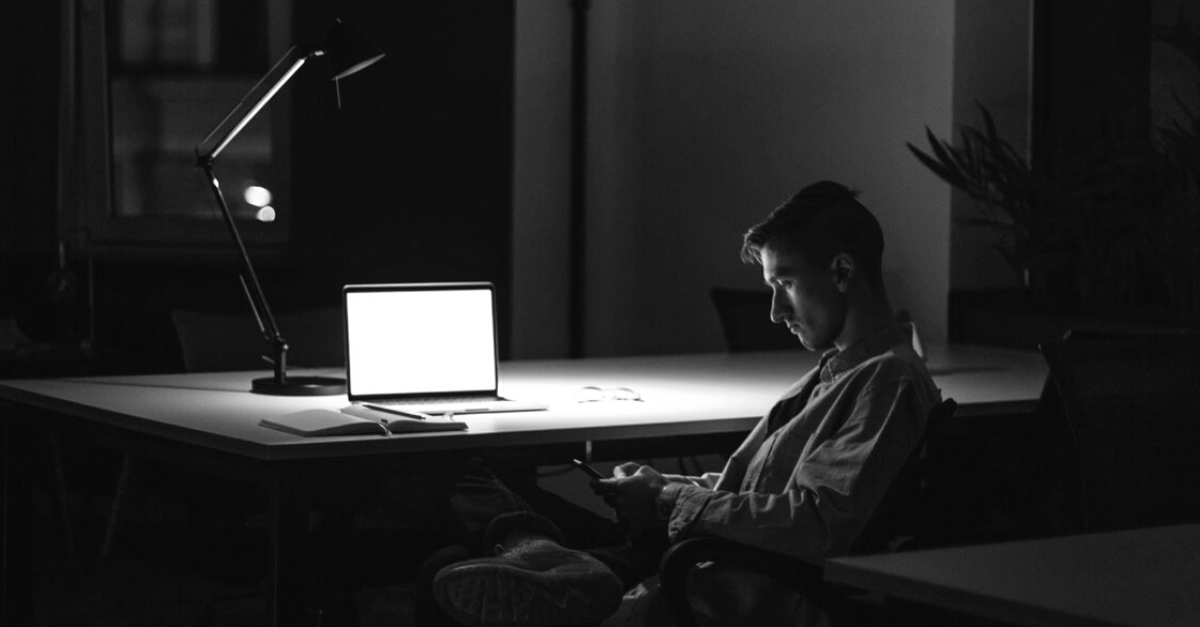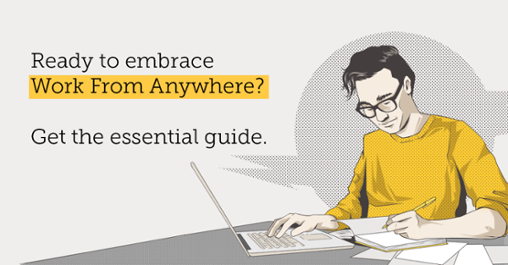The world has changed quite dramatically, in many different ways, since COVID-19 turned up on our doorsteps. Every leader across every continent has seen their organisation and the people within it impacted by the societal and economic challenges COVID-19 has brought with it.
Some of these changes have bordered on heartbreaking, but other changes have been groundbreaking.
One thing for certain is we’ll see continued volatility; it would simply defy all laws of governing dynamics to think we’ll have such a huge impact such as COVID-19 with no reverberation.
So where to from here? As much as we might want to, given these continued aftershocks, there’s no way we’re going to sweep this global pandemic ‘under the rug’ and go back to the way of work as it once was.
The old world of work no longer exists – it’s a thing of the past.
There are many ways COVID-19 has changed our workplaces forever, but for the sake of practicality, we’re going to explore the seven key differences that will shape our new world of work.
Ready to see a glimpse of the future? Grab a pen and paper and get ready, because this stuff (work) makes up a third of your life, and whether that’s back in an office, or you’re zooming in from your couch, then these trends will very likely affect your life.
7 ways COVID-19 has changed our workplaces forever:
#1: Virtual and distributed teams
While many organisations were hesitant to dive into the world of remote work before coronavirus, many have since adopted the practice and are reaping the benefits.
At PT, we’ll be the first to admit that we massively valued the face-to-face work experience and although we had reasonable work-from-home parameters, the shift to full-scale virtual work culture has been a challenge, but one we’ve risen to. We’re learning lots about ourselves, what works and what doesn’t. Drop us a line if we can help you get your teams flying in a distributed context.
In a podcast from JLL Australia, Gillian Rowbotham (human experience director) shares this perspective on the way COVID-19 has changed and will continue to change our workplaces long into the future:
“Given how suddenly everything changed, that tech has stood up pretty well, and people are mostly enjoying the flexibility to manage their day according to what needs to be done, I think we are inevitably entering a new dawn in the workplace experience.”
#2: Performance review cycles
How do you accurately assess the performance of individuals in your team after going through the life-changing, workplace-reconfiguring experience of a global pandemic? That’s the question that’s going to be on the top of many leaders’ minds now and over the coming months.
Looking further into the future, it’s clear that the traditional performance review cycle is going to be given a shake up by the adoption of remote work and distributed teams; truthfully, it’s long overdue, because most performance review systems weren’t actually performing themselves.
We just hope it doesn’t get put into 2020’s too-hard basket. Right now, is there anything more important than aiming for high performance? A couple of simple areas to focus on with reviews over the next couple of months;
- Shift them to 90-day cycles rather than 6 or 12 months. With everything moving so rapidly, you’ll need to shorten the loop.
- Go visual as much as possible. Even if you’re not face to face, ensure you’re both looking at the same screen. Auditory channels on their own are quite poor for clarity.
#3: Reductions in traditional office environments
Having a place to call ‘the office’ may be a thing of the past, or at the very least, no longer carrying the same ‘clout’ as a HQ.
It’s no secret that the costs associated with commercial real estate and serviced office spaces are high, and after this forced experience of remote work it’s likely that many organisations will significantly reduce the amount of office space they occupy over the coming months and years.
This really begs the question – what was the purpose of our office spaces anyway? Now of course, you can make a case for offices and having teams co-located, but it’s a question really worth considering at a deeper level rather than brushing off.
While you’re pondering the question, consider the insights shared in this Forbes article interviewing Adam Weber of employee engagement company, Emplify.
“Offices will be a place of convenience and comradery rather than accountability. We’ll see more companies moving to a ‘remote-first’ model where people can work wherever they want, whether that’s in the office or elsewhere.”
There is however a big difference between being a remote-first company and having a great remote-first culture. Leaders will need to be intentional about creating opportunities for these kinds of relational, culture-building exchanges on a micro and macro level.
#4: Video conferencing in business development and sales
With handshakes and one on one meetings temporarily halted, COVID-19 has forced business development and sales teams to begin thinking outside of the box.
The flow-on effect of COVID-19 on workplaces, particularly teams in the sales department, are sure to extend long after the pandemic has ended.
We can already see industries creating innovative solutions, specifically within the AEC industry. Without site visits and meetings with suppliers, architects are utilising online catalogues to locate architectural products and materials, and solutions such as BIM (Business Information Modeling) have become ever more vital in the decision-making process.
The days of the travelling salesperson living in cheap hotels and sleeping in their car might finally be put to rest…hopefully!
#5: Greater use of online project management software
As organisations shifted from a traditional office environment to a distributed, remote workforce dynamic during the early days of COVID-19 there was an astronomical spike in cloud-based project management software usage.
Stella Garber, Head of Marketing at Trello shared that they saw a noticeable increase in people signing up from non-corporate email addresses around the world. “We’re definitely seeing that too,” confirmed Alex Hood, Head of Product at Asana.
With many teams adopting and finding utility in online project management software it’s likely that these systems will continue to be used throughout organisations over the long-term.
We’d love to hear from you if you’ve had particular success in one platform over another – get in touch and let’s start a convo.
#6: Virtual learning
Learning and development continue to be a focus for organisations, but the setup and delivery of training sessions has had to change drastically due to COVID-19.
We predict that virtual learning on both a micro and macro level will continue to rise in popularity over the coming months and years, as will be the application of robust learning methodologies by providers.
Quite simply, a trainer with a laptop on a bunch of books won’t cut the mustard in the new world. State of the art studios with learning methods grounded in neuroscience and a commitment to excellence will be what employees expect in their professional development, and so they damn well should.
With many conferences and large-scale internal events cancelled amidst travel bans and gathering restrictions, there’s been an increase in demand for high-quality, virtually delivered training events, with longer-term follow up professional development attached to it.
In many cases, it’ll be the economics that drives this. A 500 person 2-day conference would cost an organisation between 250k-500k – that’s big bikkies.
But when a virtual experience can be delivered for a quarter of the price with little to no loss in productivity and a tailored post-conference experience…well, let’s just say, watch this space.
#7: Smaller group sizes in team offsites
Speaking of events, we can’t help but shed a light on the impacts coronavirus has had on culture-building team offsites.
Within many organisations, these internal team-centric events played a crucial role in internal communication across departments as well as contributing to strengthening workplace culture.
In a world post-COVID-19, we are sure to see team offsites return in some capacity, but it’s likely that these team offsites will be organised in smaller group sizes.
Sam Harris touches on this in his podcast interview with Matt Mullenweg, founder of Automattic, who has built an organisation and team from the ground up that’s completely distributed.
The Automattic group of companies are big fans of team gatherings organised by the department to allow for collaboration and connection, as well as larger, cross-organisational get-togethers.
Found these insights useful? Be sure to share this ’round with the people in your crew, and your wider leadership network. As we navigate the new world of work we’re going to need to lean on and learn from each other like never before.



